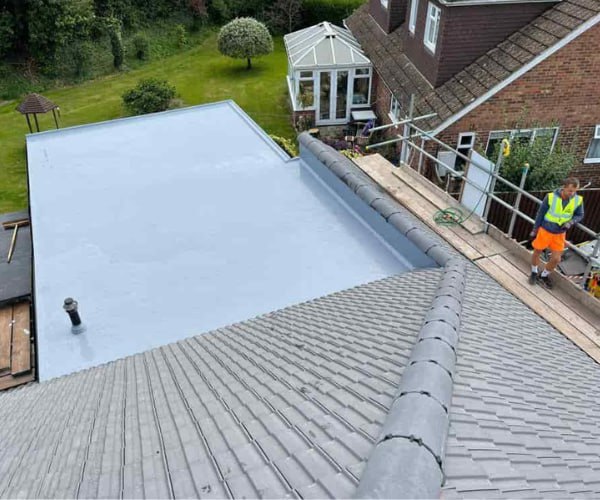Are Your Roof Tiles Past Their Best? Here’s How to Tell
Roof tiles are designed to last for decades, but no material is immune to the effects of time, weather, and wear. As the first line of defence against rain, wind, and frost, your roof endures a great deal over the years. Spotting early signs of tile deterioration can save you from bigger structural issues later on. At GKL Roofing Tickhill, we’ve worked on countless roofs across Tickhill and South Yorkshire, helping homeowners identify when their tiles are no longer performing as they should.
Understanding the Lifespan of Roof Tiles
The longevity of roof tiles depends on several factors — material quality, installation standards, and local weather conditions all play a part. In areas like South Yorkshire, where roofs face a mix of heavy rainfall, frost, and occasional storms, wear can accelerate if regular maintenance isn’t carried out.
Concrete, clay, and slate tiles all age differently, but once they begin to fail, the signs are often similar. Knowing what to look for allows you to act quickly before minor damage leads to leaks or structural decay.
Key Signs Your Roof Tiles May Need Attention
1. Cracked or Broken Tiles
One of the clearest indicators of ageing roof tiles is visible cracking. Over time, temperature changes cause materials to expand and contract, eventually leading to fractures. Even small cracks can let in water, which worsens during winter as trapped moisture freezes and expands.
From the ground, you may spot irregular lines or missing corners on tiles — both signs that replacement or repair is necessary.
2. Loose or Slipped Tiles
Tiles that have shifted from their original position leave small gaps in the roof covering. This can expose the underlay to rain and wind, allowing water to seep into your roof space. Slipped tiles are often caused by weakened fixings, corrosion, or the natural movement of the roof structure over time.
If you notice uneven lines or displaced tiles, it’s best to have your roof checked promptly by specialists such as GKL Roofing Tickhill.
3. Discolouration or Fading
While a faded roof might seem like a cosmetic issue, colour changes can also indicate surface erosion or material degradation. Clay and concrete tiles gradually lose their protective outer coating, making them more porous and susceptible to moss and algae growth.
This increased absorption of moisture can reduce the lifespan of the tiles, particularly in shaded or north-facing areas where drying is slower.
4. Moss, Algae, or Lichen Build-Up
A layer of moss or lichen may give your roof an aged, rustic appearance, but it’s not as harmless as it looks. Moss retains moisture, which can keep tiles damp for long periods and cause frost damage in colder months.
It can also lift tiles slightly, creating small gaps where rainwater can penetrate. Regular roof cleaning and maintenance help keep these issues at bay and preserve the roof’s integrity.
5. Sagging Roof Sections
If certain areas of your roof appear to sag or dip, it could indicate that water has already penetrated beneath the tiles and affected the supporting structure. This is a serious warning sign that requires immediate professional attention.
A sagging roof often points to weakened battens or rafters, which can worsen over time if the cause — often broken or missing tiles — isn’t resolved.
6. Water Stains Inside the Property
Dark patches on ceilings or damp walls are signs that your roof may no longer be watertight. Water ingress often starts with a few damaged tiles but can quickly spread.
Checking your loft for damp insulation, musty smells, or visible drips can help confirm if moisture is entering through the roof.
7. Loose or Corroded Flashing
Although flashing isn’t a tile, it plays a crucial role in sealing roof joints around chimneys, skylights, and valleys. Damaged or corroded flashing can accelerate tile wear by letting in water where tiles overlap.
If you notice rusted metal or lifted flashing edges, it may be time for professional roof inspection and repair.
Why Roof Tile Deterioration Happens
Several natural and environmental factors contribute to roof tile damage:
- Freeze-thaw cycles: Moisture trapped in small pores expands as it freezes, cracking the tiles.
- UV exposure: Sunlight gradually weakens and fades tile surfaces.
- Wind uplift: Strong gusts can loosen tiles and fixings, especially along ridges and eaves.
- Ageing: Even well-installed roofs will eventually reach the end of their life expectancy.
Understanding these causes helps homeowners in Tickhill take preventive action through periodic maintenance and inspections by experts like GKL Roofing Tickhill.
Preventing Future Tile Problems
The best way to prolong the life of your roof is with regular upkeep. Visual inspections, particularly after storms or extreme weather, can highlight minor issues before they worsen. Keeping your gutters clear and ensuring good attic ventilation also helps reduce moisture build-up beneath tiles.
Professional maintenance from GKL Roofing Tickhill ensures your roof remains in optimal condition throughout the seasons. Our experienced team can identify early signs of wear, replace damaged tiles, and keep your roof performing efficiently for years to come.
Conclusion
Your roof tiles work tirelessly to protect your home from the elements — but even the most durable materials eventually show signs of wear. Cracks, fading, moss growth, and damp marks are all early indicators that your tiles may need attention.
By recognising these warning signs and arranging timely inspections, you can safeguard your property’s structure and maintain its aesthetic appeal.
At GKL Roofing Tickhill in Tickhill, South Yorkshire, we offer expert assessments, maintenance, and repairs to keep your tiled roof in top condition. With professional care and regular checks, your roof will continue to serve and protect your home for many years to come.
Call us on: 01302 490 497
Click here to find out more about GKL Roofing Tickhill
Click here to complete our contact form and see how we can help with your roofing needs.

